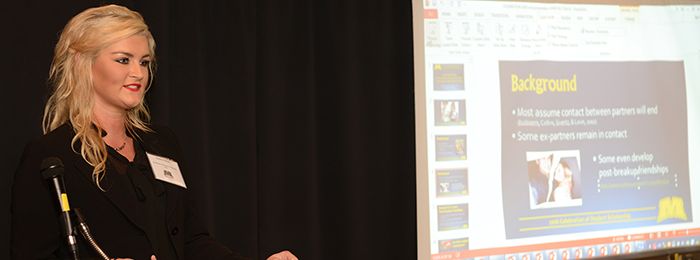Document Type
Video
Publication Date
Spring 2021
Abstract
When eukaryotes first evolved, a transition occurred from circular chromosomes to linear chromosomes. The ends of chromosome have protective caps comprised of DNA repeats called telomeres. Telomeres play key roles in two of the biggest problems in modern medicine: aging and cancer. As individuals age, telomeres shorten due to an inability to fully copy the chromosome ends during replication. In cancer, on the other hand, the enzyme telomerase is upregulated to maintain telomere length and allow the unending cellular proliferation characteristic of this disease. The goal of our work is to explore the evolution of chromosomes and unravel the roles telomeres and telomerase play in medical applications . Specifically, we are trying to circularize the linear chromosomes in the single-celled, eukaryotic yeast Saccharomyces cerevisiae. Our genetic engineering strategies involve building DNA cassettes, inserting them into the left and right arms of a single chromosome, then allowing a recombination event to connect the ends. In the left arm, we are inserting a cassette holding the HIS3 gene and half of the URA3 gene. In the right arm, we are inserting the LEU2 and the other half of the URA3 gene . By doing so, we can test independently for the integration of both cassettes for their respective arms by growing cells on plates only fit for the ones with the additional full gene inserted. After confirming both cassettes are inserted, we can then attempt to circularize the chromosomes by homologous recombination since both cassettes contain a region of DNA overlap. As of today, I have confirmed integration of AB and CD cassettes into their respective arms and am now transitioning to the final step of circularization. Ultimately, our goal is for the product of this genetic engineering process to shed light on the evolution of linear chromosomes and how eukaryotes benefit from their selection over circular chromosomes.
Recommended Citation
Hoover, Blake and Mefford, Milissa, "Circularized Chromosomes In The Eukaryotic Yeast Saccharomyces Cerevisiae" (2021). 2021 Celebration of Student Scholarship - Oral Presentations. 69.
https://scholarworks.moreheadstate.edu/celebration_videos_2021/69
Included in
Arts and Humanities Commons, Biology Commons, Business Commons, Engineering Commons, Higher Education Commons, Nursing Commons, Social and Behavioral Sciences Commons

